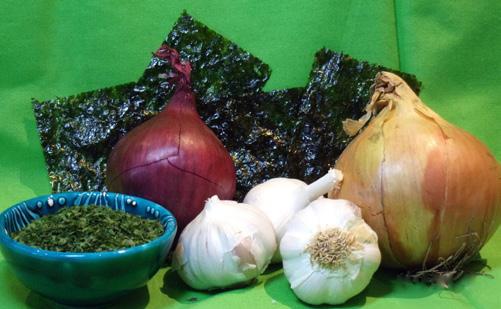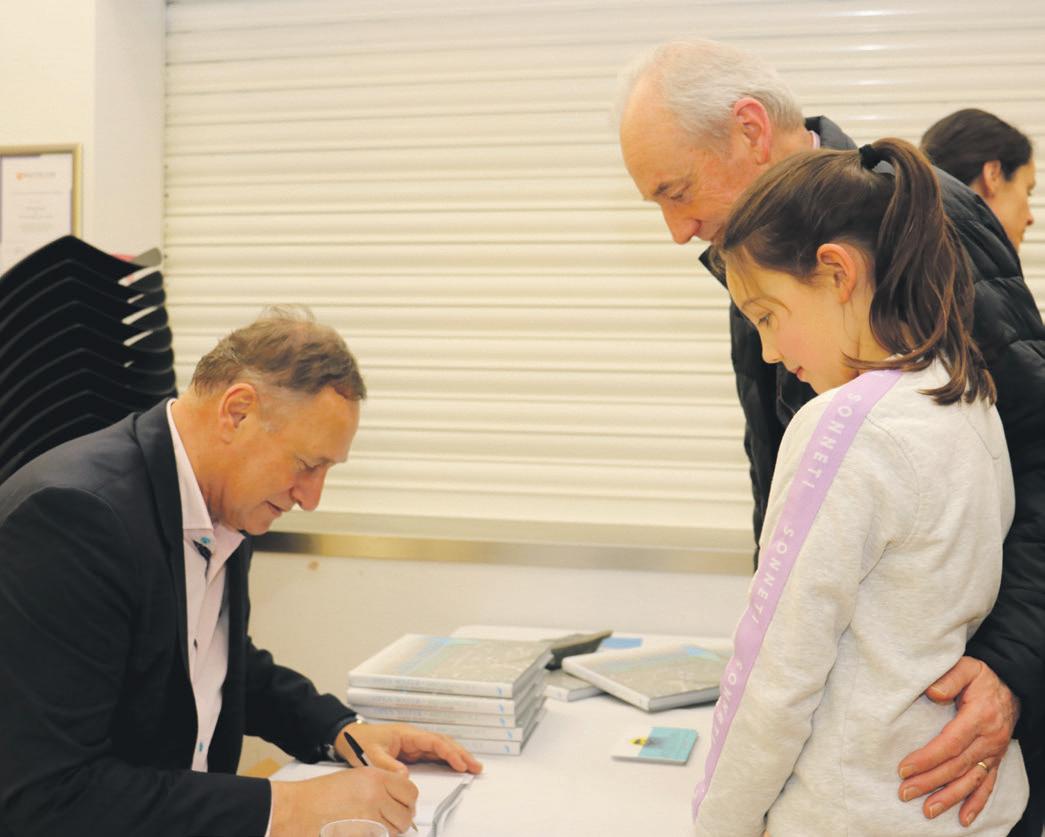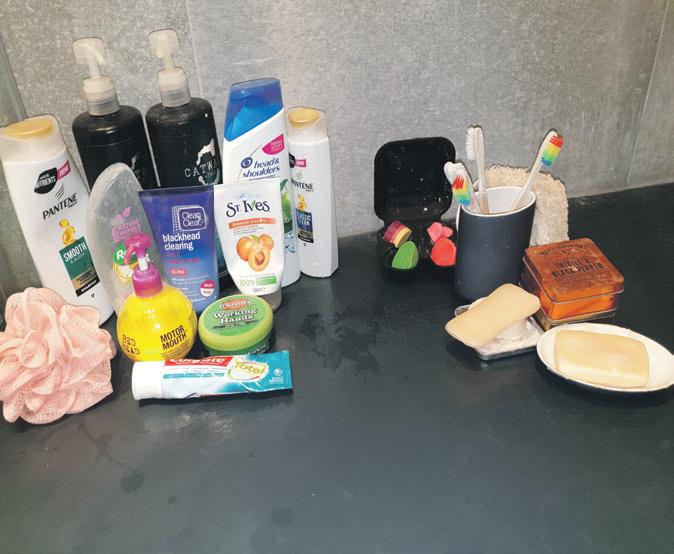
6 minute read
Paint and decorate your feeder
Animals struggling to thrive in changing Arctic
By Kitty Griffiths, Chessie Gresford, Maddie Deacon, Evie Wilkins, Sophia Shishkaryov and Rozzy Commander
IN the frozen north, a variety of different animals live in this harsh environment. They have lived here for many years and slowly, their bodies have adapted to survive in the cold climate. But there’s a problem. global warming and climate change are having a big effect on how these animals thrive. Some of them are having to travel further to find food and for some animals, their home is slowly melting away; many animals are suffering because of the changes that are happening to our planet. What are the changes and what can we do to help?
What is global warming and climate change?
Earth is protected by a layer that goes all around the world like a thick blanket. It helps Earth stay at the right temperature all year round and makes sure the world doesn’t get too hot or too cold. There are some gases called greenhouse gases that are produced when we chop down trees, when cows release gas and when we burn fossil fuels. These greenhouse gases go into the air and get in the way of the protective layer. Sunlight and heat from the sun come in through the protective layer and then the right amount of sunlight and heat travels back to the sun and the right amount stays in. But, the greenhouse gases let the light and heat in and trap more of the heat and light from escaping than usual. Therefore, our planet is warming up.
Something that isn’t helping this catastrophe is humans. We cut down trees for furniture, paper and our homes. Carbon is a greenhouse gas. Trees and other plants have carbon inside them and when we cut trees down, we are releasing carbon into the atmosphere. Trees also breathe in carbon so they get rid of some of the carbon in our atmosphere; the more trees there are, the less carbon there is. But trees are being cut down more and more each day. Hundreds a minute! We need to do something to stop it! Another thing we are doing is burning fossil fuels. Fossil fuels are, like they suggest, fossils that are burned to make fuels. They release a greenhouse gas too thus making the world heat up.
Polar Bear’s
Although about half of a polar bear’s life is spent hunting for food, less than 2% of polar bear hunts are successful. Polar bears main prey consists of ringed seals and bearded seals, though they will also scavenge carcasses or settle for small mammals, birds, eggs and vegetation.
Polar bears are great swimmers and swim 7-10 hours a day. Surprisingly, they have transparent fur and their skin is actually black. These amazing creatures live on icebergs in the Arctic Circle, weigh 1,760 lb and can grow up to 8 feet tall. They live in The Arctic Circle (an imaginary circle that goes around the north of the world and they can survive temperatures as low as -50c because of their long oily hairs that trap the heat inside.
Sadly, polar bears could face extinction from the effects of climate change and hunting. Because of climate change, the icebergs are melting drastically, polar bears are losing their homes and are very hungry due to the decline in their prey, which are seals. Polar bears are also reliant on sea ice to travel and find mates. Scientists estimate that by 2050 the polar bear population could decrease by 30% and by 2100, polar bears could face extinction due to starvation from loss of habitat.
Arctic Foxes
The Arctic fox is also known as the white fox or the snow fox because it’s coat is pure white in colour. Their fur helps them camouflage against the snow and ice of the Arctic. Their fur is also very thick and warm allowing them to survive in the freezing Arctic conditions. Sadly, because their fur is so special, the Arctic fox is hunted by humans who want to use the Arctic fox’s fur to make coats to keep them warm. Also, due to rising temperatures in the Arctic, the foxes’ fur is not changing to white in the winter making it harder for this amazing animal to hide away, safe from predators.
Climate change is having a huge impact on the Arctic fox in lots of ways. They live in little burrows in the snow but because the snow is melting, the Arctic foxes’ homes are melting too. If the Arctic foxes cannot use their burrows for safety and sleep, they are more likely to be eaten by predators, such as seals and polar bears. This means that the number of Arctic foxes will decline. The Arctic foxes eat lemmings, seal pups and berries to survive. The melting ice is reducing the space that the Arctic foxes have to live on and feed on. Their habitat is shrinking and that is reducing the amount of food which is available for the foxes to eat which is leading to some of them starving.
As temperatures in the Arctic regions rise, red foxes are moving further north into areas where the arctic foxes live and hunt. Being much larger, the red foxes are able to beat their Arctic cousins in fights for food and territory. This means the Arctic fox has a much smaller hunting ground and less food. Survival is hard.
Ringed seals
These fascinating creatures have a diet similar to other seals, such as small fish, which are easily caught. Unlike other seals, this species is only found in one place: Lake Saimaa. Sadly this is all down to humans.
Saimaa ringed seals build their lairs with snow. This is where they give birth and the lair protects their young from the cold, predators and disturbance by humans. Over the past few years the snow has not been deep enough to build these essential lairs. This represents a threat to them at the start of their lives when they are quite helpless. In particular, 2016 was a difficult year for them as it was the hottest on record. After that year, there were only 410 Saimaa ringed seals left. Another year like 2016 would make their numbers drop drastically and maybe lead to extinction. We must act fast to stop this terrible event.
The other problem facing these animals is sadly also caused by humans. When fishing nets get thrown into the sea, many Saimaa ringed seal pups get tangled up in them and drown.
What does the future hold?
Arctic animals are being affected by climate change but how we can help? Easily. By reducing the use of plastic or walking, cycling and using public transport instead of cars that cause pollution, we can reduce how much greenhouse gas is in the atmosphere.
Making simple changes to our lifestyles by making more sustainable choices will make a huge difference – if we all make these changes. This will help because if there is less pollution, there will be less climate change. Not so much of the ice will melt and we may change the future for these vulnerable animals. Having adapted over thousands of years, the conditions are different to what they’re used to. What will you do to help?





